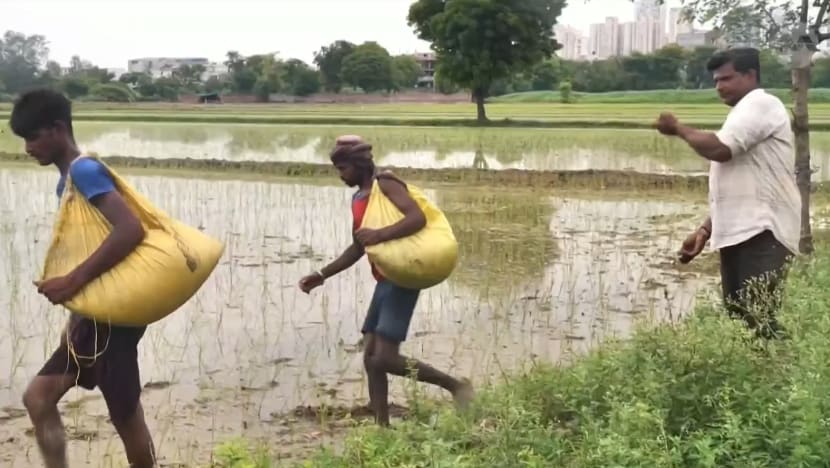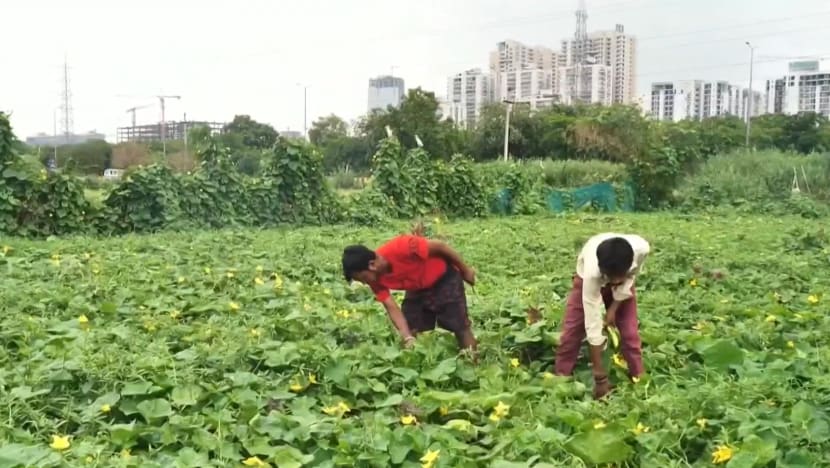India’s early monsoon season brings mixed fortunes to farmers
While the rains come as a welcome respite after months of searing heat, it has highlighted how increasingly erratic weather patterns are complicating the country’s agricultural future.

Farmers working during the monsoon season in India.

This audio is generated by an AI tool.
NOIDA, India: The early arrival of the annual monsoon season in India has brought relief to some farmers - but devastation to others.
While the rains come as a welcome respite after months of searing heat, it has highlighted how increasingly erratic weather patterns are complicating the country’s agricultural outlook.
The monsoon, the lifeblood of India's nearly US$4 trillion economy, delivers almost 70 per cent of the rainfall needed to water farms and replenish aquifers and reservoirs.
For rice farmer Tejpal Chauhan, whose fields lie on the outskirts of New Delhi, it could mean a bumper year of harvest.
The staple crop requires prolonged flooding, and this year’s early showers have allowed farmers like him to save significantly on water, fuel, and labour while reaping better profits.
“If the monsoon is good, like it has been, I can make an additional 40 to 50,000 rupees (US$467 to 583), which is excellent,” Chauhan told CNA.
“The yield will also be a lot better without spending more on fertilisers. For paddy, more rain is better.”
NO EQUAL BENEFIT
A good monsoon often means a strong harvest down the line. Farmers usually start planting summer-sown crops such as rice, corn, cotton, soybeans, and sugarcane once the rains arrive.
But not all crops - or farmers - benefit equally.
Some smaller farmers say they do not understand technology well enough to read the weather forecast. This means that by the time they find out about the rains, it could be too late.
Not far from Chauhan’s rice paddy, vegetable farmer Manish Maurya faces a far more challenging season.
The rains arrived before he could prepare his land, destroying crops already in the ground.
“Spinach will start to rot. Mustard will go bad. In fact, all the greens that I grow could be destroyed,” he said.
“The only vegetable that can withstand the rain is okra. Apart from that, I could lose everything.”

Maurya, who supports a family of six on an annual income of less than US$1,500, is now scrambling to save what he can in the short term.
He aims to improve the drainage system at his small farm in the long term, but lacks money to invest in infrastructure to reduce dependence on rain and shield his crops from too much of it.
This issue plagues millions of other farmers across India.
Arunabha Ghosh, founder and CEO of the Council on Energy, Environment and Water (CEEW), warned that this can have far-reaching consequences for the agriculture sector.
“Once you’ve lost your crop for that season, you’ve lost your crop for that season. So, that then certainly puts pressure on what kind of cropping insurance, safety net etc. we can provide to the farmer,” he added.
“Will they then have the monetary reserves for buying seeds for the next cropping cycle? It becomes a social dislocation issue, an equity issue.”
NEW FORECASTING SYSTEM
This problem could worsen as rain patterns grow more unpredictable. According to a study by CEEW, half of India’s sub-districts received 10 per cent more rainfall between 2012 to 2022, compared to previous periods.
Meanwhile, about 11 per cent of the country’s sub-districts - mostly in the fertile northern belt - saw rainfall decline.
“That is why we have to invest a lot more resources in better predictive modeling of what is happening in our region and sub region,” said Ghosh.
To deal with this, India’s Meteorological Department launched the Bharat Forecast System in May, aimed at delivering more precise local forecasts to farmers with the help of advanced computing.
While it is still too early to tell if this is making a significant impact, better forecasts could mean the difference between survival or ruin for farmers like Maurya.
As climate conditions continue to shift, India’s farmers are left hoping that better tools - and better timing - will help them weather the storm.


















